Cypress CY8CPROTO-062-4343W PSoC 6 Wi-Fi BT Prototyping Kit Specs and More
Development boards for evaluating microcontroller units (MCUs) take many forms. Some are filled with peripherals and designed purely for discovery. These are never likely to see production use but are great learning tools. Others are little more than the bare essentials an MCU needs to function and could slot into a larger prototype project. And the Cypress CY8CPROTO-062-4343W PSoC 6 Wi-Fi BT Prototyping Kit is an awesome microcontroller for building a variety of maker projects. But should you buy it? Learn all about the CY8CPROTO-06304343W PSoC 6 kit, from what it is and what it can do to if it's the right MC for you!
What is the Cypress CY8CPROTO-062-4343W PSoC 6 Wi-Fi BT Prototyping Kit?
Today we are looking at the Cypress CY8CPROTO-06204343W PSoC 6 Wi-Fi BT Prototyping kit. It has a set of features as long as its name and is perfect for both discovery and prototyping.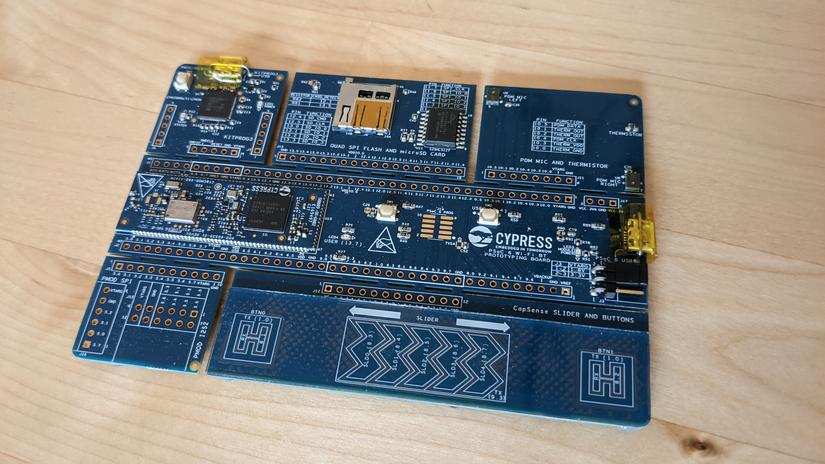
The CY8CPROTO-06204343W PSoC 6 Wi-Fi BT Prototyping kit (hereafter the 4343W kit) comes as a single evaluation board made up of six parts.
The central CY8CMOD-062-4343W module (hereafter 4343w module) features Cypress' PSoC 6 chipset. The MCU is dual-core, with one Arm Cortex-M4 as a primary processor running at 150 MHz and a secondary Arm Cortex M0+ clocked at 100 MHz for low power applications. PSoC 6 is Cypress' answer to the IoT industry's need for low-power, high-security, highly flexible hardware.
Along with many options for sensor and peripheral input/output (I/O), the MCU supports full-speed USB, CapSense capacitive touch sensing, audio I/O, and has a Quad SPI interface. The mainboard also features a WICED Wi-Fi and Bluetooth combination chip for connectivity.
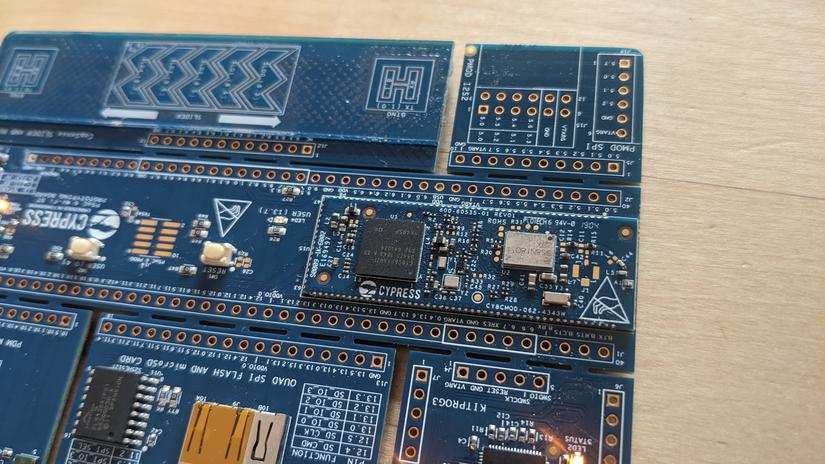
Surrounding the MCU board are various tools to help you work with the 4343w module. On the top left is a KitProg 3 programmer and debugger with a microUSB port. Next to it is a board featuring a microSD card intercave and a 512mb Quad-SPI NOR flash chip.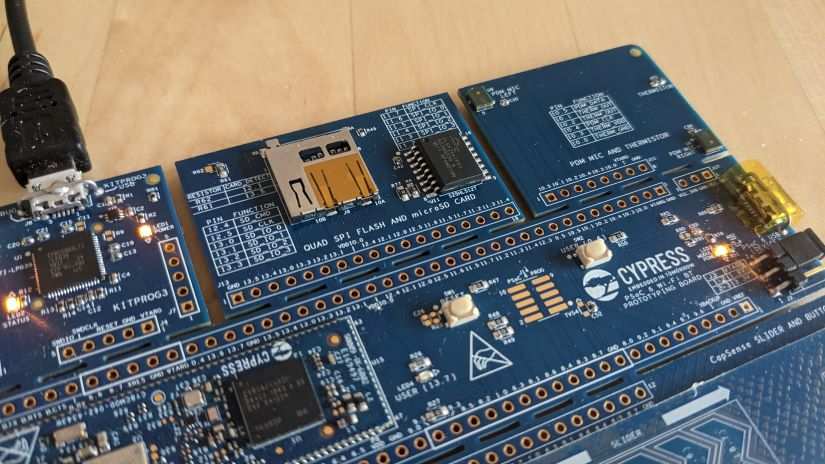
The top right corner features dual PDM microphones and a thermistor.
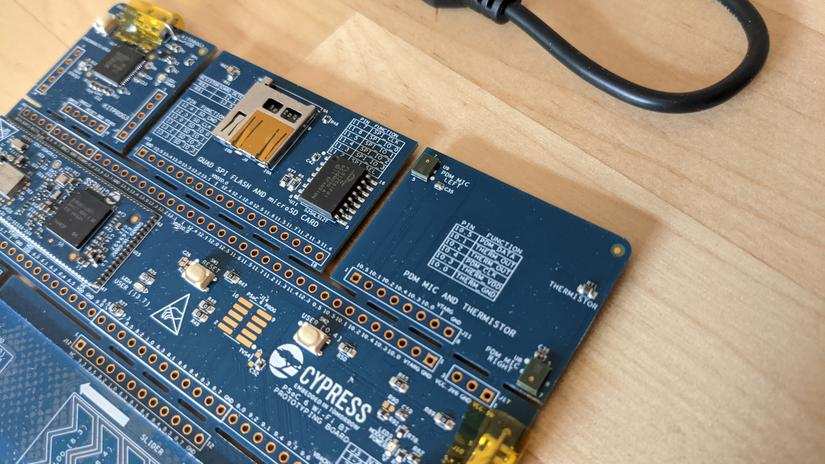
Cypress has included a capacitive sense peripheral at the bottom end of the board, including two buttons and a slider. Rounding everything off is a Digilent Pmod breakout for working with SPI and I2S2 peripherals.
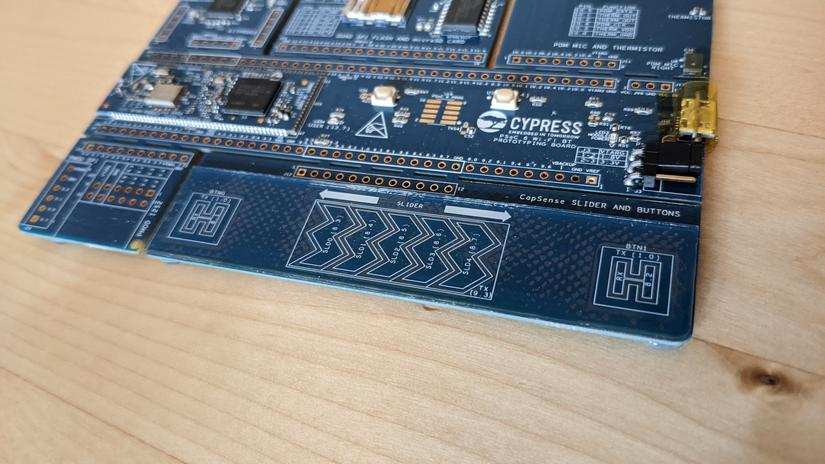
This is a lot of power and flexibility built into a board costing only $25 USD. You could keep this board intact and use it as a general-purpose development board as is. What makes this board even more flexible is the ability to break it apart and use just the parts you need.
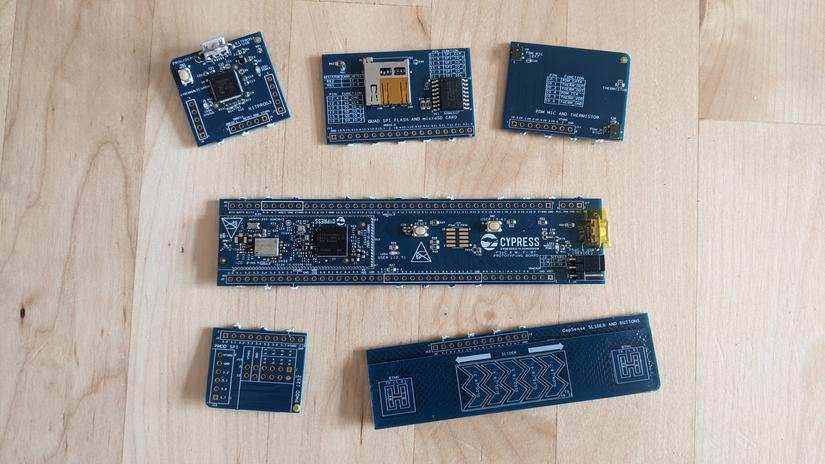
Much like the Grove Arduino Beginner Kit, the boards are connected via a snappable PCB. Once separated, each board can be reattached using the relevant pin headers for each section, clearly labeled on the PCB.
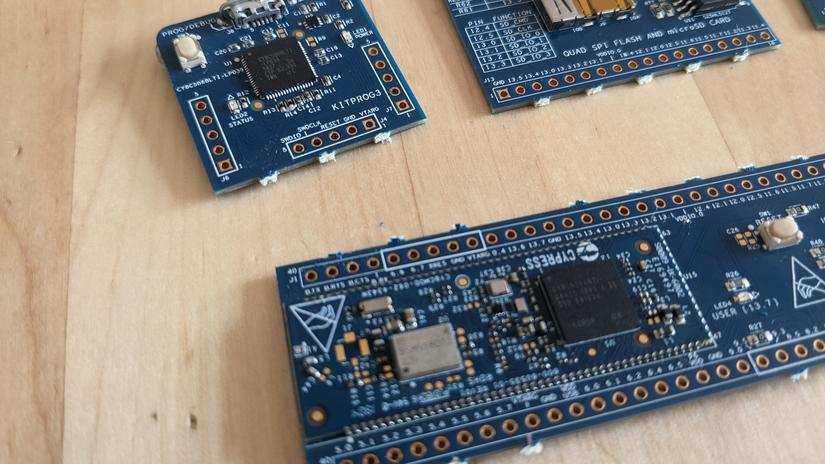
Get Started With the CY8CPROTO-062-4343W PSoC 6 Wi-Fi BT Prototyping Kit
There's no research or software required for initially setting the 4343w kit up. The back of the box comes with step by step instructions to prepare the board for power via USB and connect to the board via UART.
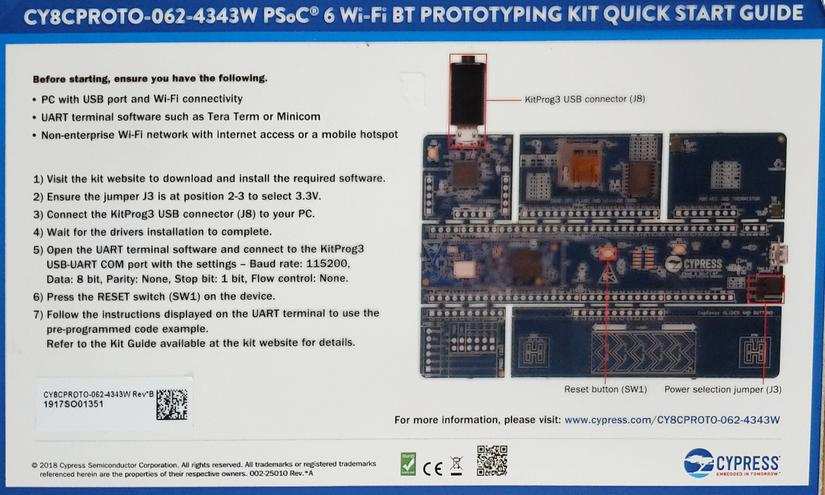
The simple Hello World program toggles the onboard LED when the terminal window detects keyboard input from the user. These pre-flashed examples are a great way to check everything is running alright and get immediate feedback.
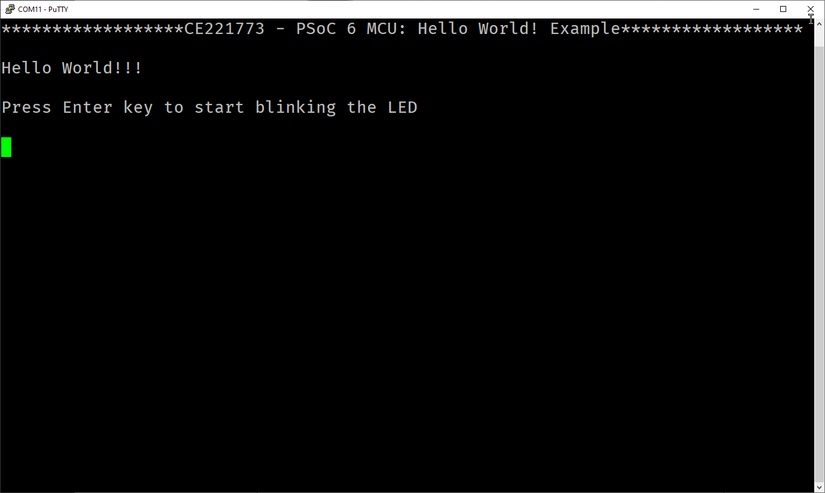
Everything In Its Right Place
The size and cost of this board make it a great entry point for anyone interested in the PSoC 6. You have access to all of the features that make the chip compelling, along with the software tools you need to experiment and design with them. In terms of software, Cypress recommends using ModusToolbox, an Eclipse-based Integrated Development Environment (IDE). Unlike many other industry-level chipsets, the PSoC 6 toolchain is available to anyone with a free Cypress account.
Once downloaded, ModusToolbox makes it simple to get started. As the board already has KitProg 3, there's no need to update the programming/debugging firmware. After selecting the board in the application menu, you can choose from several example projects showing off the various capabilities of the 4343 module and attached peripherals.
Each example has a readme file, frequently with full-color reference images, and the sample code is all well-annotated. The CySmart app for iOS and Android allows for testing basic Bluetooth Low Energy (BLE) projects and includes GUIs for capacitive touch and environment sensing, among others. Alternatively, Cypress offers a BLE 4.2 USB dongle, which can add BLE host emulation to any Windows PC.
Should You Buy the Cypress CY8CPROTO-062-4343W PSoC 6 Wi-Fi BT Prototyping Kit?
We'll talk more about this kit in a moment and go over the full specifications. For now: Should you buy a CY8CPROTO-062-4343W PSoC 6 Wi-Fi BT Prototyping Kit?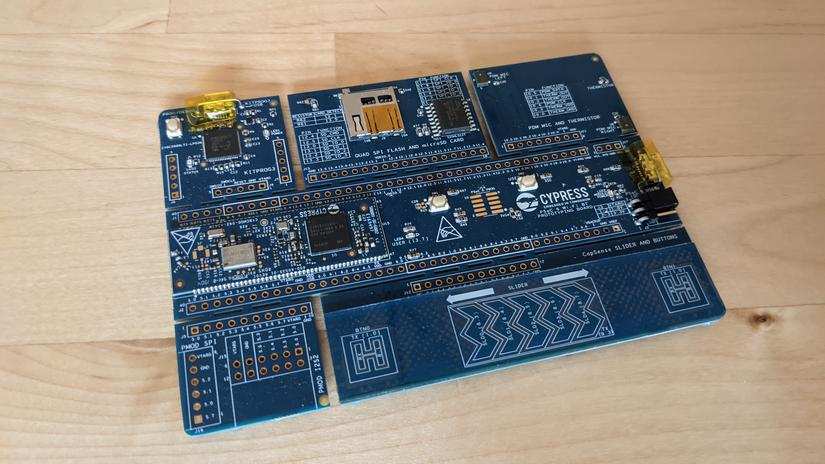
If you are interested in learning about the PSoC 6 chipset, then absolutely. In terms of what you get for your money, this is an incredible evaluation board. While programming is more involved than hobby platforms like Arduino, Cypress has made it as easy as possible to get started with the 4343w module and provides a good variety of peripherals to develop with.
CY8CPROTO-062-4343W PSoC 6 Wi-Fi BT Prototyping Kit Full Specifications
The 4343w kit comes stocked with everything you need to test each aspect of the PSoC 6 chipset.
- Cypress Semiconductor PSoC 62 Microcontroller
- 2MB flash and 1MB SRAM
- 150MHz Arm Cortex-M4, 100MHz Arm Cortex-M0+
- Dedicated SDIO controller
- Ultra-low 22μA/MHz power consumption
- Murata LBEE5KL1DX 2.4GHz WLAN and Bluetooth Module based on Cypress Semiconductor CYW4343W SoC
- 802.11 b/g/n MAC/baseband/radio with Bluetooth 4.1
- Integrated Power Amplifier (PA) for low-power handheld systems
- Integrated Low Noise Amplifier (LNA) for best-in-class receiver sensitivity
- On-board 512Mb QSPI NOR Flash Memory
- MicroSD card interface
- Micro-B connector for USB device interface
- CapSense touch-sensing slider (5 elements), and two buttons, capable of self-capacitance (CSD) and mutual-capacitance (CSX) operation
- KitProg3 onboard programmer/debugger with CMSIS-DAP mode and USB to UART/I2C bridge functionality
- Thermistor ambient temperature sensor
- 2x PDM-PCM microphones for voice input
- Digilent Pmod™ interface compatible expansion headers
- User LED, user button, and reset button for PSoC 6 MCU
- Mode switch and two status LEDs for KitProg3
- 1.8V to 3.3V operation
Learning With the 4343w Kit
The 4343w kit isn't my first experience with the PSoC 6 chip, but I'm still very much a beginner with both the hardware and software aspects of working with it. There is no shortage of evaluation boards out there with examples you can use as a basis for your own learning, but many of them are poorly documented or use proprietary toolchains, costing a significant amount of cash. Cypress's learning materials and examples are not as beginner-friendly as many who have Arduino IDE compatibility, but they are very clearly documented. This is about as beginner-friendly as industry level hardware programming gets.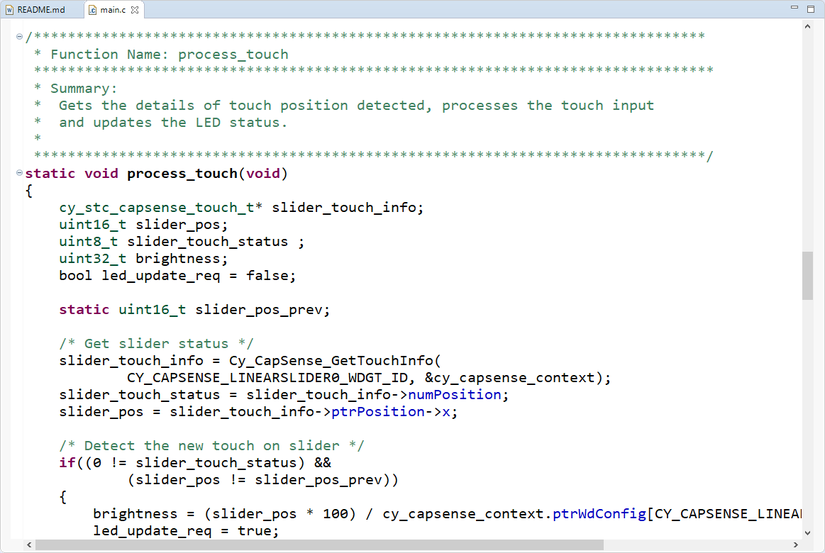
One aspect of the examples provided with ModusToolkit I particularly appreciated was the well-annotated code. The readme files for each project give a great overview, but being able to follow the code through with easy markers showing what happens when made it much easy to pick apart how everything works. I've got a long way to go before truly grasping the full complexities of the PSoC 6 platform, but some of the early concepts came quite quickly just through observation, despite lacking in any kind of formal training in hardware development.
A Springboard For Projects
With so many potential uses to choose from, I decided to try out various example projects rather than my usual routine of building a Hello World from scratch. The test project for a BLE Environmental Sensing service is a perfect introduction, which sends dummy sensor data over Bluetooth to the Cysmart app.
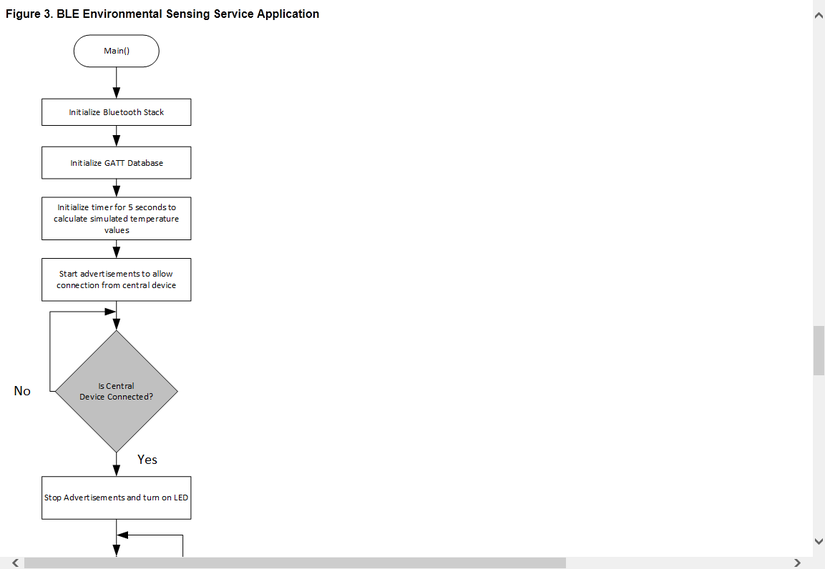
The readme for this project gives a clear flow diagram of how a BLE application works on the PSoC 6, and slotting in code to actually use the onboard thermistor was a lot easier than I expected it to be. Beyond this, the examples for capacitive touch and PDM mic give similarly in-depth introductions to the concepts. None of this will be accessible to total beginners, but those equipped with even a little prior knowledge will find the CY8CPROTO-062-4343W PSoC 6 Wi-Fi BT Prototyping Kit a challenging and enjoyable board to get to grips with. If you are curious about what the PSoC 6 chipsets can do, this evaluation board offers a lot for $25 USD.






































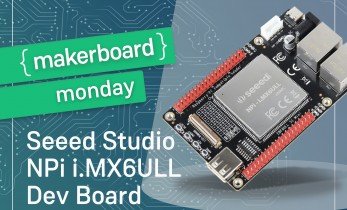


Leave your feedback...